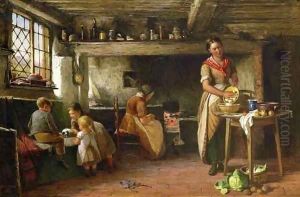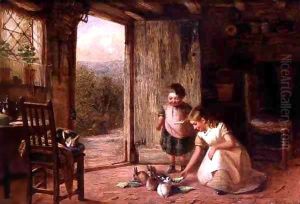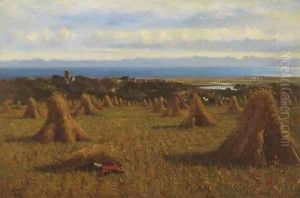Joseph Moseley Barber Paintings
Joseph Moseley Barber was an English artist known primarily for his work as a landscape painter and etcher in the late 18th and early 19th centuries. Born in 1788 in Newcastle-under-Lyme, Staffordshire, England, Barber's talent for art was evident from an early age. Despite the lack of extensive documentation about his early life, it is known that he developed his skills in the arts by studying and practicing within his local area.
Barber's artwork often focused on the picturesque landscapes of the English countryside, particularly those surrounding his home region. He was part of a tradition of British artists who took inspiration from the natural beauty of the rural landscape, which was a popular subject during the Romantic period. His etchings and paintings often depicted the serene and bucolic settings of England, capturing the changing moods of the seasons and the rich tapestry of the land.
Throughout his career, Barber exhibited a keen interest in capturing the essence of the natural world, and his works are characterized by a detailed attention to the subtleties of light and atmosphere. His etchings, in particular, reveal a delicate and precise hand, capable of rendering the intricate textures of foliage, the play of shadows, and the architectural features of the countryside with skill and finesse.
Unfortunately, Joseph Moseley Barber's life was cut short when he died in 1831 at the relatively young age of 43. His death marked the loss of a talented artist who had contributed to the rich tradition of English landscape painting. The body of work he left behind, though not as widely known as some of his contemporaries, continues to be appreciated by connoisseurs of British art for its quiet beauty and meticulous craftsmanship.
Barber's legacy is preserved in the collections of various British institutions and in the esteem of those who recognize his contributions to the artistic portrayal of England's rural landscapes. His dedication to the natural environment and his ability to translate its essence onto canvas and paper remain the hallmarks of his artistic achievement.


